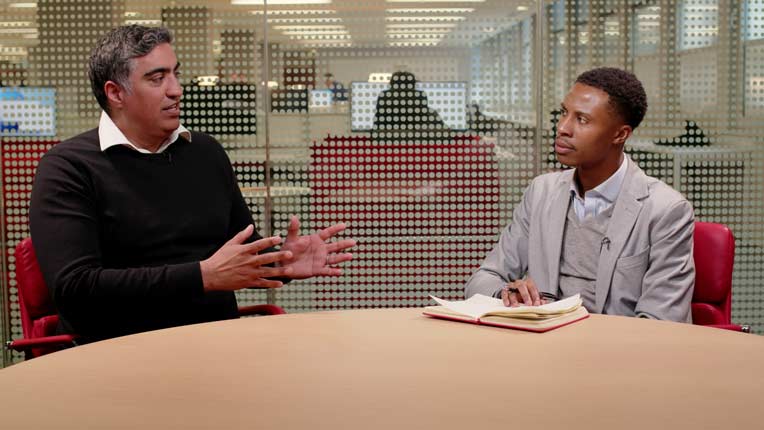This article is part of the Morningstar's Guide to Active vs Passive Investing. Click here for our edit on how the experts use the tools at their fingertips, finding out whether you prefer one to the other and examining how to blend active and passive investing for profit.
Emma Wall: Hello and welcome to the Morningstar series, "Ask the Expert." I'm Emma Wall and here with me today is Shaun Port, Chief Investment Officer of Nutmeg.
Hello Shaun.
Shaun Port: Hello.
Wall: So, Nutmeg blend passives in order to create portfolios for investors, low-cost portfolios. How exactly do you go about that? I mean, what's at the core of those portfolios?
Port: Well, I think asset allocation is your primary decision as an investor, whether you're retail type investor or whether you're an institution. So, we really focus on risk as our sort of primary side of how are we going to manage a portfolio, what blend of assets are we going to use and of course, you generally are going to start with large cap equities and that's the U.S., obviously the U.K., Europe and Japan, a very broad spread.
And then we look to build and use bonds as more of a stabilising element in a portfolio to provide the degree of income and then we look at other asset classes. What do they really add to the portfolio? Do they really enhance a basic portfolio? We always have to come back to basics since they – if you look at a straight large cap equity government bond portfolio, how can you improve on it? And if you can't, how are you doing it?
Wall: Those sort of external extras are called satellite funds, aren't they, or satellite holdings and there where you have much smaller exposure to perhaps more risky things. I mean, obviously, it's dependent on the individual's appetite for risk. But generally, that's where the things like emerging markets start to come in, isn't it?
Port: Yes, emerging markets and the small companies whether it's in developed markets or in emerging markets, other brands of fixed income such as emerging market debt or high yield. These are interesting things you can add to a portfolio. But they are actually things that you should think about where you are in a cycle, should you be owning high yield at this point in the cycle, should you own small caps? These are things very much dependent on where you are in the market and the economic cycle. So, you need to add these quite intelligently and think about what they are doing to your portfolio in terms of the risk and the potential reward.
Wall: Now, Nutmeg has become known and synonymous with passive investing, but there is nothing written in your company DNA to say that you're against actives a 100%, are you? It's more about if those opportunities arise then perhaps you will look at active exposure?
Port: Yes, absolutely. I think when we look at it, can we see active managers delivering and doing better than their cost? That's the fundamental problem. If you have quite high fees whether it's the annual management charge or turnover costs, for those it has to beat those fees. And there is nothing to say that an active manager can't pick individually good companies. It's actually a lot of this fee drag that's the problem. So, we focus on really driving down that fee. And if we can construct a very well diversified portfolio, there is something like 3,000 underlying holdings at a cost of about 0.15%, 0.2% a year. It's very hard but active funds actually come out and beat that very low return.
But if we did see an asset class where we thought active managers would do consistently better on a reliable basis and over many timeframes, not just over five years, but over relatively shorter timeframes like a year, we may include that. So, it's nothing like we say we won't ever include an active manager, but it has to be really valid, it has to add a lot to the portfolio and to beat what is quite high benchmark really, really low costs and the asset class returns.
Wall: And property perhaps is one of those asset classes where the because of the sort of investment that it is, we're talking about real bricks and mortar holdings here, lend themselves to something such as an investment trust, a closed end portfolio because of liquidity problems.
Port: Yes. So, I think when you look at where active managers could deliver it's in the less liquid asset classes and I you'll probably risk going in an open ended structure, much better in an closed ended structure, like you said an investment trust where they can actually physically manage those investments and costs are very important in that when you transact a portfolio. So, some asset classes I think are very much more suited to a closed ended structure when there is lot less liquidity.
Wall: But it is at the end of the day making sure that every holding has earned its place in your portfolio?
Port: Absolutely. It has to pay for it.
Wall: Shaun, thank you very much.
Port: Pleasure.
Wall: This is Emma Wall for Morningstar. Thank you for watching.




























